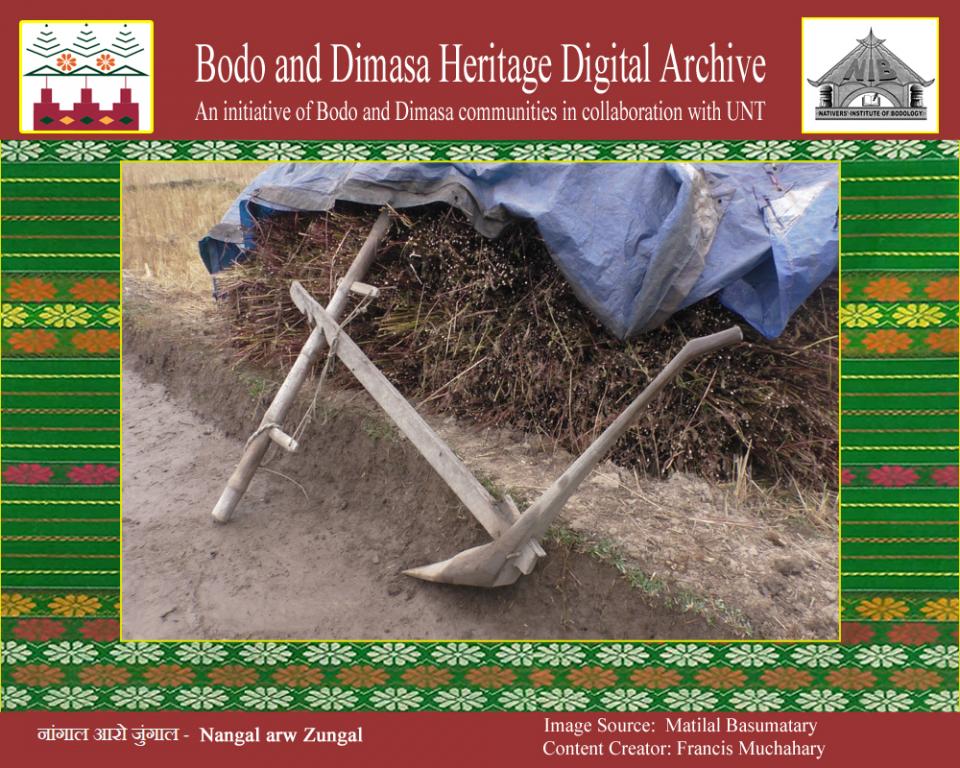नांगाल आरो जुंगाल (Nangal arw Zungal)
The basic components of the nangal are a shoe, a body, a handle and a beam. The handle of the plough is generally 0.6-1 m long, 5-7.5 cm thick and 7.5-12.5 cm wide and is fitted to the body of the plough. The shoe of the plough is varied in shapes and sizes. The share is prepared from a mild iron bar generally 0.6-7.5 m in length and 1.5-2.5 cm in width and it is fixed to the shoe or body by means of a U-clamp or ring-shaped clamp. The share point projects beyond the shoe by 5-7.5 cm. Beams are generally different in length. This tool is used with a pair of oxen and the depth of the plough is 15 cm mostly. The hitching point can be height-wise and sideways adjusted in order to control the depth of the work and to stabilise the plough while operation.
The nangal (plough) cannot operate alone without the support of the jungal, which is made of wood or bamboo, measuring about 1.5 m. This wooden or bamboo bar is placed on the neck of the pair of oxen while ploughing horizontally, which is again attached to the dilagon of the nangal with the help of a rope or lengra dirung made from jute. It is basically operated by male farmers.
In farming the basic operation is tillage and it is done to soften the soil to create favourable conditions for seed placement and plant growth. This is done mainly with an ox-drawn nangal (plough) made of wood, mainly of sal tree. It is generally operated by male farmers.


Add new comment